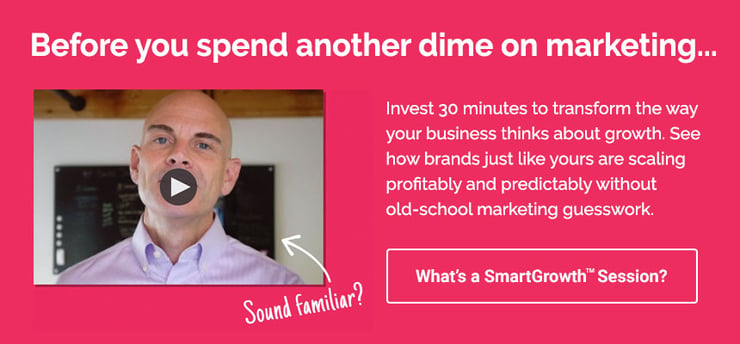Email nurture campaigns are essential for building relationships with leads and customers, but not all nurture campaigns are created equal.
According to a recent study, personalized emails generate 6x higher transaction rates and revenue per email than non-personalized emails. Segmentation offers compelling benefits too – including better open rates and increased sales leads. In this article, we will explore the best practices for email nurture campaigns that can help you drive engagement and increase conversions so you can make the most of your email marketing efforts and your budget.
Email Nurture Campaign Best Practices
Define Your Goals
Before launching any email campaign, it's crucial to define your goals. Are you looking to increase brand awareness, generate leads, or drive conversions? Once you've defined your goals, you can tailor your email content and messaging accordingly. For example, if your goal is lead generation, you may want to offer a free trial or demo in your email. Whereas if your goal is to drive conversions, you may want to compare and contrast your product or solution with your competitor’s and end with a strong call to action.
Segment Your Audience
Targeting the right audience is crucial for a successful email nurture campaign. And that's where segmenting your lists comes in. By segmenting your audience, you can personalize your emails for each group, making them more relevant and effective.
B2B brands can benefit greatly from segmenting their lists. For example, in the healthcare industry, you can segment your list into doctors, nurses, and administrators based on their roles, and then tailor your content accordingly. Or, if you're a SaaS company, you can segment your audience based on their industry or their stage in the customer journey. This will allow you to send targeted content that speaks directly to their needs and pain points.
By segmenting your lists, you can provide valuable content that resonates with each individual, thereby increasing open rates, click-through rates, and ultimately, conversions.
Use a Clear and Compelling Subject Line
Your subject line is the first thing your audience will see in their inbox, so it's important to make it clear and compelling. A good subject line should be concise and relevant, and create a sense of urgency. For example, "3 Ways Your Marketing Strategy is Broken" is direct, specific, and piques curiosity. Your goal is to make it impossible for your audience to NOT click through.
Personalize Your Emails
What separates good email campaigns from great ones is personalization. By tailoring emails to individual users and specific audience segments, you can truly connect with your customers and build long-lasting relationships. From addressing recipients by name to sending targeted offers based on their purchase history, the possibilities for personalization are endless.
The benefits go far beyond increased engagement rates. By providing relevant content and offers, brands can establish themselves as authorities in their field, build trust with their audience, and ultimately drive more conversions. And the results speak for themselves, with personalized emails outperforming non-personalized emails by a staggering 29%. Not only do customers feel valued and understood, but brands benefit from higher open rates, click-through rates, and ultimately, conversions.
Test and Optimize
Finally, always test and optimize your email nurture campaigns. Not only does it improve the overall performance of your campaigns, it also helps you gain valuable insights from actual data. Testing provides tangible data to evaluate the effectiveness of email nurtures. By measuring open rates, click-through rates, conversion rates, and other key metrics, you can make data-driven decisions that improve the user experience, personalize content, refine messaging, and ultimately increase engagement and revenue. Don't forget to A/B test everything from subject lines to URLs and images. Every tweak can have a significant impact on the bottom line. Investing time and resources into testing and optimizing email campaigns is an investment in significant and measurable results for your business, so don’t overlook the value of continually refining your campaigns.
Email nurture campaigns are a powerful tool for building relationships and moving leads into and through the sales funnel. By following these best practices, you can create personalized and engaging campaigns that drive conversions and revenue, maximize the impact of your marketing dollars, and keep your sales team busy.
However, if implementing all these steps feels daunting, partnering with an outside agency can help. At Brand Theory, we employ these practices every day to help our clients reach their customers at the right time with the right message. Our proven growth marketing framework is a strategic step-by-step process that is built on thoroughly understanding your audience, your unique value proposition, and your competitive advantage BEFORE we launch into developing your campaign. If you’re ready to take a more comprehensive, data-driven approach to marketing that delivers consistent results, book a no-obligation introduction to Brand Theory today.




.png)
.png)
.png)